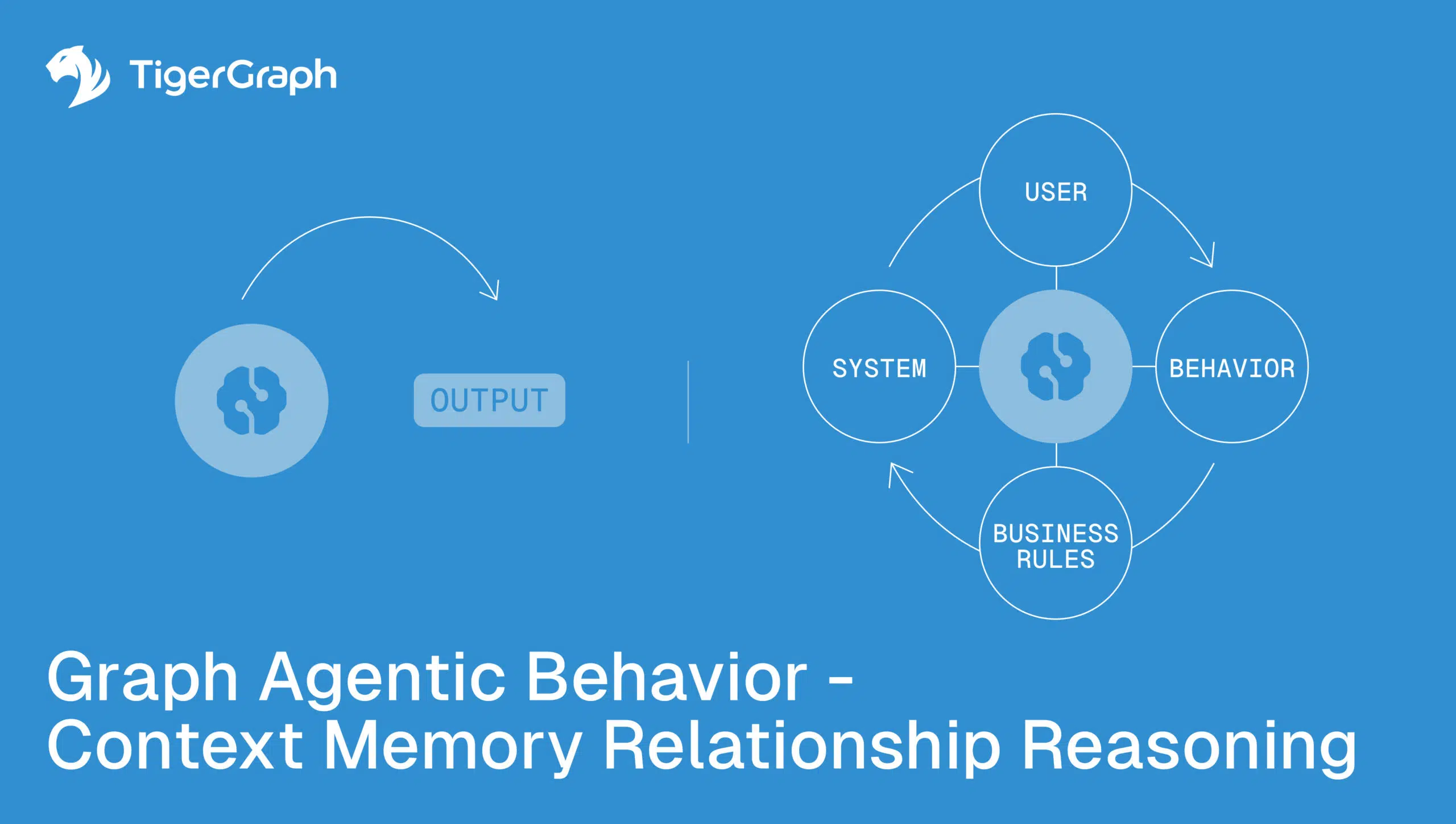Using Graph to Ground Agent Reasoning in Real Time
Autonomous AI agents don’t just need instructions—they need context to reason. As AI systems grow more agentic, taking initiative, coordinating tasks, and acting independently, the question becomes not just what they’re doing, but how they decide what to do.
This context-grounded reasoning isn’t a bonus feature. It’s a necessity.
Customer preferences shift, network behavior changes, and business rules evolve, and this means that rigid agents quickly become brittle. They follow yesterday’s logic into tomorrow’s mistakes.
What separates brittle agents from resilient ones is the richer, governed feedback loop. They need the ability to sense changes, understand ripple effects, and modify future behavior accordingly. And the architecture that powers this kind of feedback isn’t just more prompts or clever APIs. It’s graph.
TigerGraph makes adaptive intelligence operational by modeling relationships, behavioral signals, and evolving context in real time. This is where static agents become context-aware decision makers,and where graph becomes the control layer.
Why Agentic AI Needs Context, Not Just Feedback
Language models can generate responses and even self-critique with enough scaffolding. But ask them to recall the impact of a decision made five steps earlier or adjust based on shifting dynamics across a network and the limitations become clear. Without structured memory and situational awareness, their adaptation remains superficial.
To adapt wisely, agents need a feedback system grounded in context and continuity. That means understanding:
- Current State: What’s happening right now? What’s changed in the environment—among users, systems, or inputs?
- Historical Memory: What happened last time a similar scenario played out? What worked? What failed?
- Relational Feedback: How does a single action affect the web of connections around it—from user sentiment to inter-agent dependencies?
This trifecta of awareness, memory, and feedback isn’t something stateless LLMs can handle on their own. But it’s exactly what graph databases are designed to do.
And TigerGraph doesn’t just make it possible—it makes it performant, enabling agents to tap into these signals at enterprise scale and in real time.
How Graph Enables Contextual Reasoning for Agents
Imagine an agent responsible for customer outreach. One of its tasks is to send follow-up messages after product updates. It seems simple. But what if, after one outreach cycle, support tickets spike? What if users start disengaging, or sentiment drops on connected social accounts?
A traditional AI pipeline might never notice. It operates in silos with an endless “prompt in, action out” functionality. But with TigerGraph, modeling the relational context, those signals don’t disappear—they surface.
Using TigerGraph’s real-time graph traversal, the agent can:
- Reassess its communication strategy based on user reactions or support volume.
- Modify timing and tone for specific segments based on prior outcomes.
- Detect emergent friction in parts of the network and escalate or pause action accordingly.
These aren’t pre-programmed responses. They’re live decisions based on the changing structure of relationships and signals in the graph. This is what turns rigid prompt chains into adaptive systems.
Building Smarter, Safer Agents with Graph Feedback Loops
Let’s break down how a feedback loop actually works in a graph-powered environment:
- The agent takes an action, say, recommending a financial product to a user.
- The network responds, other users ask questions, support tickets rise, or conversion drops.
- The graph updates and new relationships are formed, weights shift, and alerts are triggered.
- The agent sees the new picture and adjusts their strategy, revising their messaging, escalating to a human, or pausing outreach entirely.
Now imagine that loop happening not every week or day, but every minute, across millions of nodes and edges, all updating in near real time.
That’s not just automation. That’s autonomous systems learning how to behave better. And it’s only possible when agents operate in a live, structured, relational context. In other words: a graph.
Why TigerGraph Is Built for This
While any graph database can model relationships, TigerGraph is purpose-built to turn those models into operational systems that support AI at scale.
What makes TigerGraph stand out?
- Real-time streaming graph updates: The graph state reflects what’s happening now, not a stale snapshot from last night’s ETL run.
- Parallel, multi-hop traversal at scale: Ask questions like “Which agents are influencing others negatively?” or “Where is engagement collapsing?”—and get answers in milliseconds.
- Schema-first modeling for governance: Adaptation is powerful, but without structure, it’s chaos. TigerGraph lets you encode business logic and compliance constraints directly into the graph.
- ML and GNN-ready graph features: Feed graph-based signals into downstream learning models or run them natively using TigerGraph’s integrated AI capabilities.
Together, these features allow organizations to move beyond hardcoded logic and into systems that evolve safely, responsibly, and in alignment with business goals.
From Rules to Responsiveness: Building AI That Listens, Learns, and Evolves
Autonomous systems are being asked to make decisions, influence outcomes, and interact with real people; and static rules are no longer enough. Responsiveness grounded in context, history, and relational understanding is what defines whether agentic AI will succeed or spiral out of control.
To move from brittle automation to intelligent adaptation, we need more than smarter prompts or faster models. We need infrastructure that understands change as it happens, that retains memory across interactions, and that reasons through the ripple effects of every choice an agent makes.
Graph offers that infrastructure. It doesn’t just connect data—it reveals how actions flow through networks, how behavior unfolds over time, and how intent, influence, and outcome intersect in dynamic systems.
TigerGraph operationalizes this for real-time environments. But the broader shift is what matters most: a move away from reactive logic and toward systems that truly learn from their impact.
If you’re building agentic AI for the enterprise—systems that must evolve responsibly, reason transparently, and adapt to the world around them—this is the moment to embed the right foundation.
Not more rules, but smarter responsiveness. Not more control, but deeper awareness. And not just intelligence—relational intelligence.
The future of autonomy isn’t scripted. It’s situational. And that means it starts with graph.
Your Agents Can’t Adapt Without Feedback
Scripted responses won’t cut it in dynamic environments. TigerGraph gives your AI agents the real-time context, behavioral feedback loops, and adaptive reasoning they need to evolve safely and intelligently.
Try TigerGraph Cloud for free and start building agents that learn as they go. https://tgcloud.io

